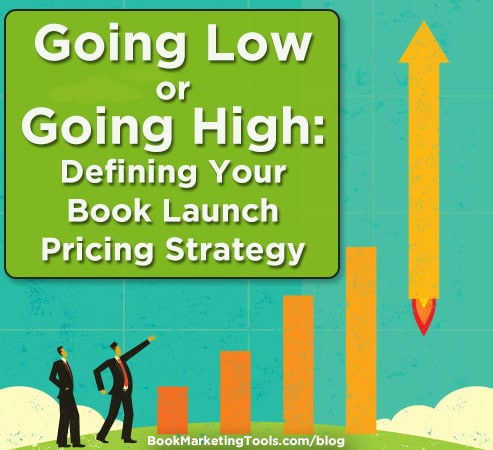While authors who have gone the traditional publishing route have very little—if any—control over the price of their books, independent authors have plenty of freedom to set and alter pricing as they please. Being in the latter group sounds great, but freedom can be a tremendous source of uncertainty for Indies as there’s no guaranteed result for pricing high or pricing low during a launch. No matter how many case studies you read, everyone’s experience will be different.
With price being such a critical aspect of marketing, how does an author navigate this in the context of a book launch? Do you price low to entice would-be readers to give your writing a chance or do you price high to establish a level of quality? While there is no secret formula, there are certain factors to consider that can help guide your pricing strategy for both a new ebook and print book.
- What is the perceived value of your book to a potential buyer?
Many buyers will pay more for a non-fiction book that helps them in a tangible way than they will for a fiction book they’re only likely to read once. That doesn’t make either any less valuable, but it does explain the disparity between non-fiction and fiction prices.
- Will your audience consider your book to be favorably priced?
In the land of Permafrees (permanently free books) and $0.99 reads, it can be tough to compete. The reality is that while books priced at $1.99 and below are great for unit sales, they’re not so great for earnings. Many bestselling self-published fiction authors find a sweet spot between $2.99 and $3.99 while non-fiction writers are comfortable between $5.99 and $9.99.
- Are there established price points within your market?
If you can’t find recommended prices, be sure to find out what the going rate is for full-length books in your market by averaging out the price of the top ten sellers in your category. Do the same for shorter books or novellas as they tend to be cheaper. As a new author, you’ll want to be careful not to overprice your book based on an average. However, knowing the average will give you a better idea of how you can strategize your pricing.
- How does your launch price compare with that of other authors in your genre or niche?
It’s not difficult to gain competitive intelligence on other books currently being launched in your genre, so do some digging and see what your fellow horror or healthy eating authors are doing.
- Can you offer pre-launch, launch day, or post-launch discounts to certain segments of your target audience?
Offering a special pre-order price to your email list, for example, can have a terrific impact on pre-order sales.
- How will pricing affect your royalties?
Depending on your distribution channels, your earnings may be related to list price requirements such as those for Amazon.com.
- How price sensitive are your readers?
A 2014 study by Smashwords revealed that the price sensitivity of non-fiction buyers is much lower than that of fiction buyers. This is something you’ll want to pay attention to if you’re planning to increase your price after launch.
Early in your writing career, gaining readers should be your focus. It’s a common strategy for first-time authors to go in low (or free) in order to attract an initial wave of buyers and then change to a regular price later. Another pricing strategy that tends to work well is to offer a special pre-order discount as an incentive, changing the price to the regular price on launch day or soon after. Some authors then run another discount promotion a few weeks after launch to keep the momentum going and then switch to the regular price once sales peak again. This is often referred to as price pulsing.
The benefit of dropping from the regular price to around $0.99 or free during a promotion is that the potential spike in sales can get you into recommendation queues, drive your title up bestseller lists, and increase your visibility. In addition, you can leverage free and bargain book promotion sites such as ReadingDeals and Bookbub to reach thousands of targeted readers for a massive bump in exposure. As you hit your sales peak, you revert to the higher retail price and benefit from an increase in royalties. If you opt to follow a pricing strategy like this, clearly advertise the drop in price as a limited promotion otherwise you’ll have buyers unearthing their pitchforks from the shed and lighting up the torches after looking up your address.
As you launch additional books and experiment with different price points, you’ll be able to optimize your pricing strategy for future launches.
What’s your view on pricing high or low during a book launch? We’d love to hear your thoughts, so drop us a line in the comment area below. If you want to learn more about book launches, hit the subscribe button and then download our comprehensive book launch success checklist. It’s free!


